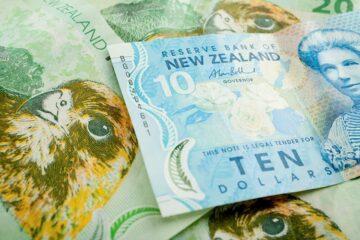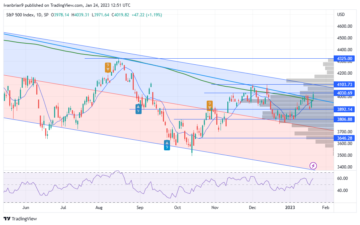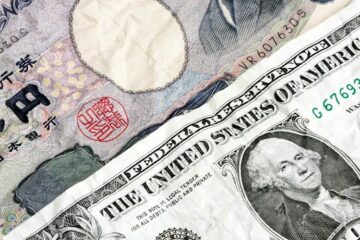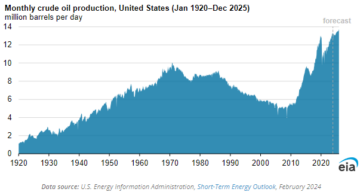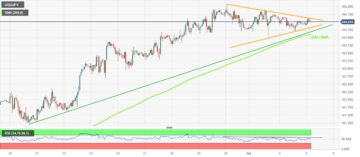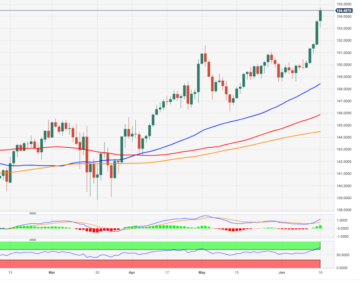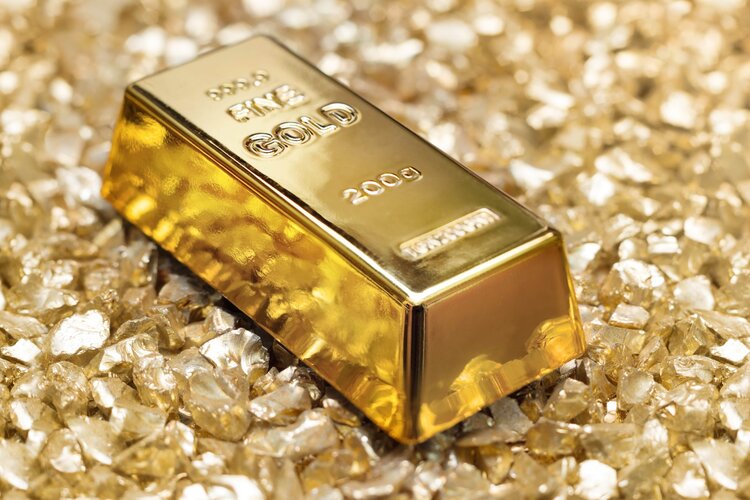
- Gold price trades sideways as investors await the Fed’s preferred inflation gauge.
- Upside risks to price pressures would allow the Fed to maintain a hawkish interest rate stance.
- The US economy is performing stellar on the grounds of consumer spending, labor market and economic growth.
Gold price (XAU/USD) remains stuck in a tight range as investors await the US Core Personal Consumption Expenditure – Price Index (PCE) for December, which will be published at 13:30 GMT. The core underlying inflation data will provide fresh clues as to whether the Federal Reserve (Fed) will stick to its restrictive interest rate stance in March or be poised to cut interest rates, a move that would be positive for non-yielding Gold.
Economic indicators such as consumer spending, labor market and the Gross Domestic Product (GDP) have remained robust, allowing Fed policymakers to advocate for higher interest rates at least for the first six months of 2024. The argument in favour of restrictive policy stance would strengthen if the underlying inflation turns out stubbornly high in today’s PCE data.
Daily Digest Market Movers: Gold price consolidates ahead of Fed’s preferred inflation gauge
- Gold price remains inside the woods as the upside was capped amid uncertainty ahead of the United States core PCE price index data for December. While the downside is being supported because of geopolitical tensions and the chance of rate-cuts by the Federal Reserve this year.
- The Fed’s preferred inflation gauge is forecast to rise by 0.2% against the former reading of 0.1%. The annual underlying inflation data is set to slow to 3% versus 3.2% in November.
- The US economy expanded at a robust pace of 3.3% in the final quarter of 2023 while market participants projected a slower growth rate of 2.0%. This has uplifted the economic outlook, which could keep price pressures elevated.
- US Treasury Secretary Janet Yellen said surprisingly strong economic growth came from higher productivity and robust consumer spending without escalating inflation risks.
- A stubborn core PCE price index report could combine with an optimistic economic outlook to propel upside risks to price pressures. This would allow Fed policymakers to continue to maintain a hawkish interest rate stance for the first six months of 2024.
- After the release of the Fed’s preferred inflation gauge, market participants will shift their focus towards the Fed’s first monetary policy of 2024, which will be announced next week.
- The Fed is widely anticipated to keep interest rates unchanged in the range of 5.25-5.50% for the fourth time in a row. Investors will keenly focus on the timing of when the Fed will start reducing interest rates.
- The CME Fedwatch tool is showing that the chances in favour of a 25-basis point (bp) rate cut in March are at 48%. This indicates that traders are seeing the Fed reducing interest rates from May.
- Till now, Fed policymakers have been considering expectations of rate-cuts from March as “premature” due to resilient US economic prospects and stubborn inflationary pressures.
- Fed policymakers have been warning that rate cuts at this stage would be premature, which could lead to a surge in overall demand and dampen efforts made to bring down core inflation to its current 3.9% level.
- The US Dollar Index (DXY) holds onto recovery inspired by upbeat US Q4 GDP data but struggles to print a fresh high near 104.00.
Technical Analysis: Gold trades back and forth near $2,020
Gold price continues to trade sideways in a limited range as the broader focus is on the Fed’s interest rate policy, which will be announced next week. The precious metal struggles to sustain above the 50-day Exponential Moving Average (EMA), which trades around $2,015.00. Fresh downside would appear if the asset drops below the psychological support of $2,000. Momentum oscillators indicate a sharp decline in volatility.
Gold FAQs
Gold has played a key role in human’s history as it has been widely used as a store of value and medium of exchange. Currently, apart from its shine and usage for jewelry, the precious metal is widely seen as a safe-haven asset, meaning that it is considered a good investment during turbulent times. Gold is also widely seen as a hedge against inflation and against depreciating currencies as it doesn’t rely on any specific issuer or government.
Central banks are the biggest Gold holders. In their aim to support their currencies in turbulent times, central banks tend to diversify their reserves and buy Gold to improve the perceived strength of the economy and the currency. High Gold reserves can be a source of trust for a country’s solvency. Central banks added 1,136 tonnes of Gold worth around $70 billion to their reserves in 2022, according to data from the World Gold Council. This is the highest yearly purchase since records began. Central banks from emerging economies such as China, India and Turkey are quickly increasing their Gold reserves.
Gold has an inverse correlation with the US Dollar and US Treasuries, which are both major reserve and safe-haven assets. When the Dollar depreciates, Gold tends to rise, enabling investors and central banks to diversify their assets in turbulent times. Gold is also inversely correlated with risk assets. A rally in the stock market tends to weaken Gold price, while sell-offs in riskier markets tend to favor the precious metal.
The price can move due to a wide range of factors. Geopolitical instability or fears of a deep recession can quickly make Gold price escalate due to its safe-haven status. As a yield-less asset, Gold tends to rise with lower interest rates, while higher cost of money usually weighs down on the yellow metal. Still, most moves depend on how the US Dollar (USD) behaves as the asset is priced in dollars (XAU/USD). A strong Dollar tends to keep the price of Gold controlled, whereas a weaker Dollar is likely to push Gold prices up.
- SEO Powered Content & PR Distribution. Get Amplified Today.
- PlatoData.Network Vertical Generative Ai. Empower Yourself. Access Here.
- PlatoAiStream. Web3 Intelligence. Knowledge Amplified. Access Here.
- PlatoESG. Carbon, CleanTech, Energy, Environment, Solar, Waste Management. Access Here.
- PlatoHealth. Biotech and Clinical Trials Intelligence. Access Here.
- Source: https://www.fxstreet.com/news/gold-price-awaits-us-core-pce-data-for-fresh-guidance-202401261019
- :has
- :is
- $UP
- 000
- 1
- 13
- 2%
- 2022
- 2023
- 2024
- 30
- 33
- a
- above
- According
- added
- advocate
- against
- ahead
- aim
- allow
- Allowing
- also
- Amid
- an
- analysis
- and
- Animate
- announced
- annual
- Anticipated
- any
- apart
- appear
- ARE
- argument
- around
- AS
- asset
- Assets
- At
- average
- await
- back
- Banks
- BE
- because
- been
- began
- being
- below
- Biggest
- Billion
- both
- BP
- bring
- broader
- but
- buy
- Buy Gold
- by
- came
- CAN
- central
- Central Banks
- Chance
- chances
- China
- CME
- combine
- considered
- considering
- Consolidates
- consumer
- consumption
- content
- continue
- continues
- controlled
- Core
- core inflation
- correlated
- Correlation
- Cost
- could
- Council
- country’s
- currencies
- Currency
- Current
- Currently
- Cut
- cuts
- data
- December
- Decline
- deep
- Demand
- depend
- Digest
- diversify
- Doesn’t
- Dollar
- dollar index
- dollars
- Domestic
- down
- downside
- Drops
- due
- during
- Dxy
- Economic
- Economic growth
- economies
- economy
- efforts
- elevated
- EMA
- emerging
- enabling
- ends
- escalate
- exchange
- expanded
- expectations
- exponential
- exponential moving average
- factors
- FAQ
- favor
- fears
- Fed
- Federal
- federal reserve
- final
- First
- Focus
- For
- Forecast
- Former
- forth
- Fourth
- fresh
- from
- gauge
- GDP
- geopolitical
- GMT
- Gold
- gold price
- Gold Prices
- good
- Government
- gross
- grounds
- Growth
- Have
- Hawkish
- hedge
- High
- higher
- highest
- history
- holders
- holds
- How
- HTTPS
- if
- improve
- in
- increasing
- index
- india
- indicate
- indicates
- inflation
- Inflationary
- Inflationary pressures
- inside
- inspired
- instability
- interest
- INTEREST RATE
- Interest Rates
- investment
- Investors
- Issuer
- IT
- ITS
- jewelry
- jpg
- Keep
- Key
- labor
- labor market
- lead
- least
- Level
- likely
- Limited
- lower
- made
- maintain
- major
- make
- March
- Market
- Markets
- May..
- meaning
- medium
- medium of exchange
- metal
- module
- Momentum
- Monetary
- Monetary Policy
- money
- months
- most
- move
- Movers
- moves
- moving
- moving average
- Near
- next
- next week
- November
- now
- of
- on
- onto
- Optimistic
- or
- out
- Outlook
- overall
- Pace
- participants
- pce
- perceived
- performing
- personal
- plato
- Plato Data Intelligence
- PlatoData
- played
- Point
- poised
- policy
- policymakers
- positive
- Precious
- preferred
- Premature
- pressures
- price
- Prices
- Product
- productivity
- projected
- Propel
- prospects
- provide
- psychological
- published
- purchase
- Push
- Quarter
- quickly
- rally
- range
- Rate
- Rates
- Reading
- recession
- records
- recovery
- reducing
- release
- rely
- remained
- remains
- report
- Reserve
- reserves
- resilient
- Restrictive
- Rise
- Risk
- risk assets
- risks
- robust
- Role
- ROW
- Said
- secretary
- seeing
- seen
- set
- sharp
- shift
- shine
- showing
- sideways
- since
- SIX
- Six months
- slow
- Solvency
- Source
- specific
- Spending
- Stage
- stance
- start
- starts
- States
- Status
- Stellar
- Stick
- Still
- stock
- stock market
- store
- store of value
- strength
- Strengthen
- strong
- Struggles
- such
- support
- Supported
- surge
- surprisingly
- tends
- tensions
- that
- The
- the Fed
- the world
- their
- this
- this year
- time
- times
- timing
- to
- today’s
- tool
- towards
- trade
- Traders
- trades
- Treasuries
- treasury
- treasury secretary
- Trust
- turbulent
- Turkey
- turns
- Uncertainty
- underlying
- United
- United States
- upbeat
- Upside
- us
- US Core PCE
- US Core PCE Price Index
- US Dollar
- US Dollar Index
- US economy
- us treasuries
- Usage
- USD
- used
- usually
- value
- Versus
- Volatility
- warning
- was
- week
- weighs
- when
- whereas
- whether
- which
- while
- wide
- Wide range
- widely
- will
- with
- without
- Woods
- world
- World Gold Council
- worth
- would
- XAU/USD
- year
- yearly
- yellen
- yellow
- zephyrnet


